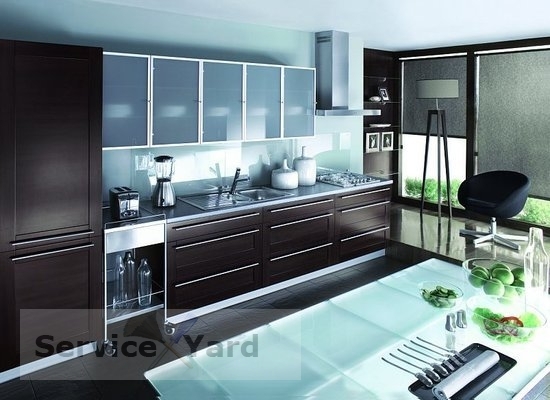Steel pipes of circular cross section are used in many industries: the construction of bridges, gas and oil pipelines in residential homes, factory floors and in many other areas and industries. The product range is very broad, they may differ in diameter, the material and method of manufacture. All parameters of products are regulated by GOST.
The main characteristics of round pipes
The main parameter, which is conducted by the preliminary selection of tubes for use, is the diameter. The assortment for round pipe diameters the following types:
- The outer diameter is the basic size when determining whether to use the product in various areas of industry and household.
- Inner Diameter characterizes deliverability of the pipeline. From this value depends on the size and nature of the flow pressure loss during fluid movement.
- Conventional diameter. This size is estimated bandwidth characterizes tubing and may be the same for different sizes. For example, for size and 45h2,5 43h1,5 nominal diameter DN = 40.
- Nominal diameter. The calculated value of the selection of the desired parameter.

Applicability of products of different diameters
Depending on the outer diameter, the product may be used in the following areas:
- For heating and hot water systems of residential and industrial buildings used 40-50mm diameter steel pipe.
- In hydraulic systems working elements of machines and road equipment, depending on the amount of supplied liquid diameter may be from 8 to 50 mm.
- In large apartment buildings for the cold water supply pipeline diameter applied to 150 mm.
- In the oil, gas and chemical industries for internal transports raw products used diameters up to 273 mm.
- Large urban boilers for supplying heat to the house, and water utility company for supplying water is applied to 325 mm diameters.
- Sewer pipes have a size of 530-1020 mm in diameter.
- In large systems of large dimensions of 1020 mm may be used for transporting oil and gas and more.
- The pipes are widely used in the construction of pile driving, supports foundations and bridges. Diameter of articles from 650 mm.
The actual values used may be different sizes of products in the table, and dependent on the structural features of the piping system used.

The wall thickness and other parameters
The wall thickness depends on the method of manufacture of the product and is:
- for hot-rolled - 2.5... 75 mm,
- for cold rolled - 0.3... 24 mm,
- welded - 1... 32 mm,
- welded on the spiral-rolled 3.5 technology... 25.
The weight per meter. To determine the mass table is used gauge of the guests. If you want to calculate the mass of 1 meter, the calculation according to the formula:
P = ((D-S) / 40,5) * S, where
- P - mass of one meter, in kg.
- D - outside diameter, in mm.
- S - the wall thickness of the product, in mm.
- 40.5 - factor depending on the specific gravity.
The products can be applied in a steel building structures. To force the calculation of such structures is necessary to determine the moment of inertia and radius of gyration. These values can also be taken from GOST tables or determined by the formula:
J = ΠD³ * S / 8 and j = 0.353D, wherein
- J - moment of inertia, in cm4,
- Π - pi equal to 3.14
- D - outside diameter, in cm.
- S - the wall thickness of the article, in cm.
- J - radius of inertia cm.
Another parameter which characterizes the possibility of using tubes in building constructions, the resistance torque is circular. Designation Wx and Wy. In a circular pipe, these parameters are the same for the OX and OY axes. This parameter can also be determined by the formula or take on a table.

Types of pipes by the method of production
There are the following methods for producing pipelines: hot deformed, cold deformed, electrically. Dimensions and manufacturing tolerances, manufacturing materials regulated assortment round steel pipes, of various sizes for each mode of production:
Pipes steel seamless hot GOST 8732
Pipe Production takes place in three stages. In the beginning heated to 900-1200 degrees round workpiece on special machines make holes firmware, resulting in the sleeve. Then the sleeve is rolled in the roughing conduit, and the last step of this calibration, rolling with the final dimensions of thickness and diameter.
Dimensions of parts produced by this method of production can be: outer diameter of 16-630 mm, wall thickness of 1,5-50 mm. Billets products are divided into several groups, depending on the applicable manufacturing material:
- A -mechanical properties of the product are normalized.
- B - the chemical composition is regulated at the factory.
- B - both governed by the mechanical properties and chemical composition;
- G - normalized chemical composition and mechanical properties are tested on prototypes;
- D - regulated test pressure when testing.

Seamless steel tubes cold deformed in accordance with GOST 8734
For use round rolling steel billets. The preform is heated in a special furnace to a temperature of onset of crystallization to obtain the required plasticity. Then stitched and into the rolling mill, where with the help of rollers formed the rough dimensions of the product. The last operation, this calibration and cutting a certain length.
Unlike hot-deformed pipes, cold-during calibration receives additional heat treatment, which makes these products robust and durable.
Cold-products fall into the following categories, where the main criterion is the ratio of the diameter D to the size of the wall S:
- Extra thin-walled, with a ratio D / S greater than 40. If the size of D = 20 mm and smaller, the size of S = 0,5 mm and less.
- Thin-walled, with a ratio D / S from 40 to 12.5 or less. Also when the tube D = 20 mm. or less, when S = 1,5 mm and less.
- Thick, when the ratio D / S from 6 to 12.5.
- Osobotolstostennye at a ratio of D / S is less than 6.
Extra thin-walled and thin-walled tubes are used in various hydraulic systems, automotive engines, industrial refrigerating plants as well as in medical and food industry. The main use of thick-walled pipes - it is oil and gas industry.

steel tubes according to GOST 10704
Manufacturing process includes multiple steps, which are combined into one continuous process:
- Cutting the slab. It is performed on high-precision machines and produces billets of the same size.
- For strips of the endless belt are welded together, previously passed through a roller system for removing surface defects.
- The resulting billet is passed through a system of horizontal and vertical rollers through which the product is formed.
- Welding edges is performed by high-frequency welding. The edges of the workpiece are heated to the melting temperature of the inductor, and then compressed by the crimping rollers. Another way, when the edges are heated using high frequency generator, a current is supplied to the edge via the contacts.

High-frequency welding - Calibration and deburring. The preform is cooled, and then passed through calibration rollers to eliminate the roundness and to ensure the required size.
- Cutting products. Billets are cut into the desired size.
- Quality control of products manufactured in three ways: monitoring weld test using high pressure water and flattening. To control the weld generally used ultrasonic method. The flaw detector is located directly in line after the welding operation. Control 100% exposed articles. Hydraulic test exposed 15% of products from the Party. A check for flattening are two articles of the party.

Electrowelded pipes are widely used in the laying of utilities that can withstand heavy loads and pressure. Products of 1200 mm diameter. used during installation of almost all of the main gas and oil pipelines.
The materials used in the manufacture of
The materials used in the manufacture of hot-deformed pipes, are specified in ISO 8731, and for cold deformed in ISO 8733. In the manufacture of such products are applied billet of ordinary carbon steel according to GOST 380 quality carbon structural steel according to GOST 1050, and structural alloyed steel GOST 4543. In the production of electric-welded pipes, all technical conditions for materials, products specified in IEC 10705.
In industry, widely used seamless pipes made of stainless steel. They are used in instrumentation, with car manufacturing, the chemical industry and many other areas of production.

The entire assortment, as well as specifications of stainless steel round tubes, set to GOST 9941. According to the method of production, they are made of cold or hot-way, in the following sizes:
- at external D 16-53 mm, a wall thickness S 2-5 mm;
- if D 53-73 mm, the S from 4.5 to 10 mm;
- D 84-80 mm diameter, the wall S of 11 to 15 mm;
- for diameters D 140-219 mm, S of 28 to 32 mm.
For protection from corrosion of stainless steel pipes, in its composition contains chromium, which is made resistant to corrosive chemicals. The surface of the obtained finished products may be matte or mirror, depending on the method of manufacture of pipes.
Loss of liquid head when moving in circular tubes
When transporting liquids in pipelines arise pressure losses, which depend on the following factors:
- roughness of the inner surfaces of the pipe,
- losses during the passage section of the waist in the taps, adapters and other valves,
- loss at sharp 90 degree corners conduit
- In addition, the pressure loss depends on the fluid viscosity.
There are two modes of fluid flow: laminar and turbulent. Laminar flow is when the fluid movement occurs in pipelines without mixing the particles. When there is a plentiful turbulent mixing and the rotational motion of the fluid particles. The transition from laminar flow to turbulent flow occurs when the Reynolds number Re> 2300.

The Reynolds number depends on the speed of the flow, the inner diameter and fluid viscosity and fluid motion characterizes mode. The sizing of the pipelines necessary to design Reynolds number was Re <2300. Thus less power loss and costs on pumps fluid movement.
flare connection
For the joining of sewer and water lines used flare connection. For this purpose, the ends of the pipes make a special extension, where the other end is inserted. Tightness compound provided in various ways:
- Sealing cement. This method is used when joining sewer systems. Initially, the gap seal using hemp, and then poured cement.

Products with a bell - Sealed with a rubber sealing ring. Before assembly, the ring should definitely lubricated with glycerin or soap solution.
- Adhesive bonding. The ends of the cloth is treated for roughening. Then smear adhesive solution inside the socket and the pipe end. Both products are tightly pressed and held until the adhesive has hardened.
- Connection by welding.
Interfacing of the socket provides a secure connection, but in some cases, a so-called set douplotnitel, particularly for cast iron sewer systems.



